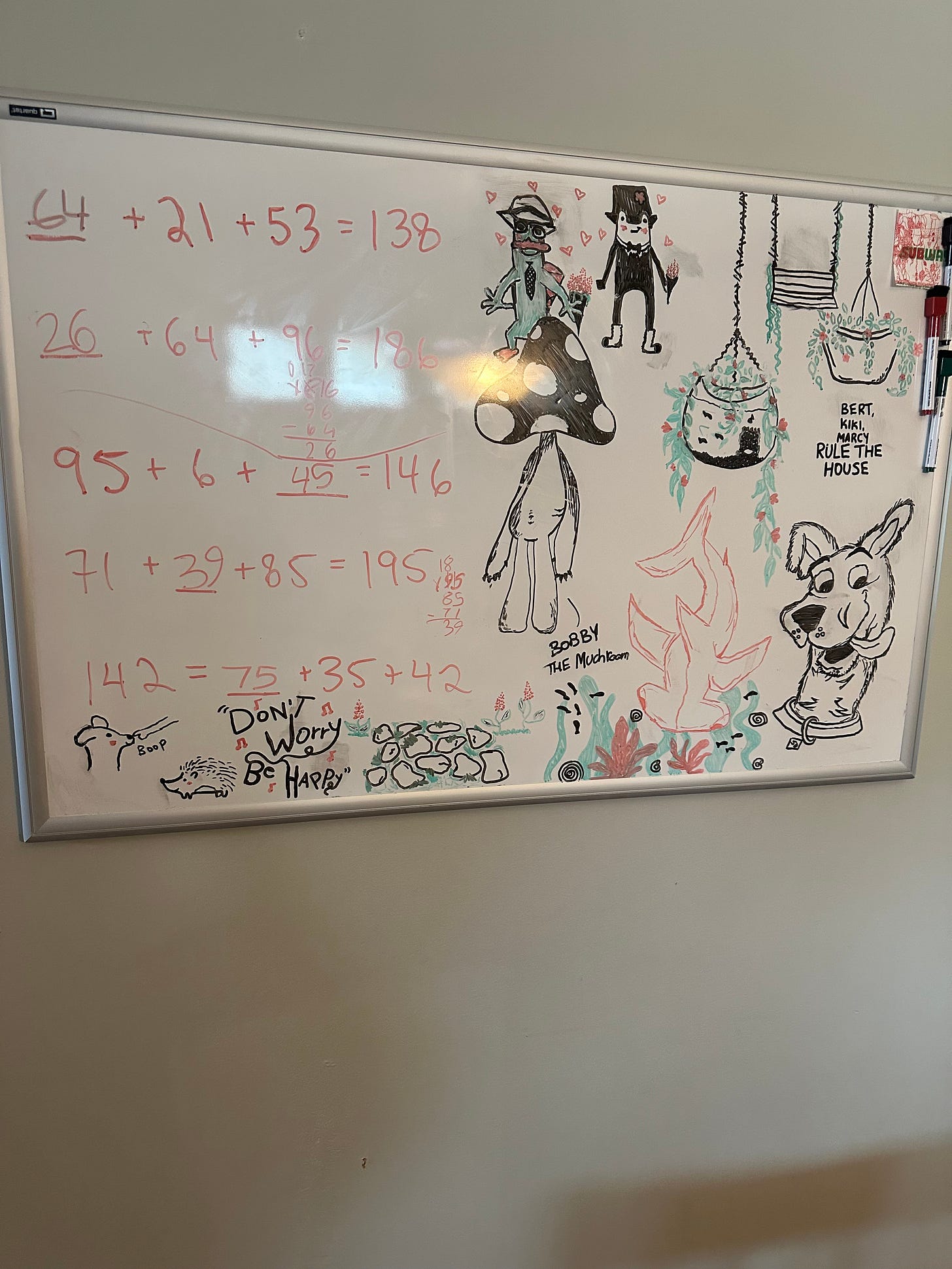Dispatch from the Underground
Ketamine therapy for PTSD gave me no god and no healing. Just skulls, caves, and a book.
I’ve spent the last thirteen months underground. During this time, I’ve accomplished two things:
1. Completed a 12-week ketamine therapy group for PTSD;
2. Wrote a novel called In Dreams (going on submission in April.)
***
I had high hopes for the ketamine. I was convinced that it would be transformative, that it would help yank me out of the near-constant fantasies of getting some insulin, finding a nice, private bed of moss in the forest, and saying night-night to this sweaty ballsack of a world forever.
I talked to others who’d been through the program. They all said it was one of the most profound and important experiences of their lives. I wanted to have a profound and important experience. I wanted what they described— a sense of transcendence, of interconnected wholeness.
Instead, I got Hades. Lots and lots and lots of Hades. The medicine said, “hope you like caves!”, and that is what it gave me. Each session, while others were actually becoming the flower or literally surfing the waves of the cosmos, I found myself in a David Lynch meets Tim Burton subterranean hellscape. I could see stars through a hole in the mud ceiling, but being that I was thousands of layers underground, they were blurry and indifferent.
The psychedelic therapy facilitators told us it was important not to compare our experiences, because the medicine would show us each exactly what we needed. I wondered why I needed to see mud, skulls, little bouncing green alien/robot guys, why I needed to feel an extreme sense of isolation and dread.
“It makes sense,” said my counsellor, “since so much of your life has been dealing with death. It showed you that part of your subconscious.”
“Well I don’t want an excavation of my subconscious,” I said, “I want transcendence. I already know that my subconscious is a cabinet of horrors. There’s nothing new there. The only thing I was shown is that I can laugh at how dark everything is, and I already knew that.”
“Well, maybe that was the message.”
“I borrowed six thousand dollars to do this.”
“I know. Let’s see how you feel over the next few months. Integration takes time.”
I was off on medical leave from work; healing was my full-time job, and I was failing at it. In our weekly ketamine group therapy meetings, we had to do breathing and grounding exercises together over Zoom. At first, I participated earnestly. By the third month, after being plunged thrice into hell, I was turning off my camera and vaping and doodling buttholes in my journal. I’d wanted so badly for the medicine to connect me with my dead parents, my dead partners (even a dead grandparent would have been fine!), to have been gifted a message from anyone in the great beyond that life was still worth living and that there was still purpose for me beyond motherhood. I didn’t get that message. I didn’t get any messages, really. Just mud.
I feel like I had to put a picture somewhere, so here’s one of the whiteboard in my living room that I bought as a tool to teach my son math and organize my life. It’s going well.
***
What the ketamine did do was unlock me creatively. I started In Dreams, and I finished it by the new year. I don’t think that’s a coincidence. It was written in a six-month pukefest of existential rage. Rage at how utterly unfair and fragile life can be, yes, but also rage at beauty culture, wellness grifting, the commodification of nostalgia, the growing AI enshitification of absolutely fucking everything.
I was so immersed in writing that I forgot to daydream about insulin moss bed nap time for those six months, which was worth the 6k in credit card debt, I guess.
In Dreams was meant to be a rom-com, but it turned into something stranger (shout-out to my friend Susan Sandford-Blades who did a developmental edit and pushed me to fuck the romcom noise and lean into satire and horror. If you’re not subscribed to her newsletter, Gurls to the Front, you should go do that.) The novel morphed into a sort of techno-horror in a rom-com trojan horse, a real turducken of a thing. It’s about Jules, a middle-aged journalist who tries an AI-driven device that allows users to program their own lucid dreams. Then she has to choose between her blossoming romance with a former 80s sitcom star (now goat cheese farmer) and a curated world of dreams where she can reunite with her dead fiancé and stillborn child. It explores the commodification of nostalgia and how AI is colonizing our most sacred spaces. Uplifting literature for dissociatives.
Anyway, I’m still way underground, but I’m used to it down here now. If you’re ever down here, too, you should come say hey.




I'm so glad you sent us a missive from the mud and I'm SO STOKED about your novel. You know I think you're a shiny, shiny star, even if that shine is coming out of a cave right now.
It is so great to read your words again Chelsea, your writing is unique and hilarious. I can’t wait to read Dreams. So happy you are writing again.